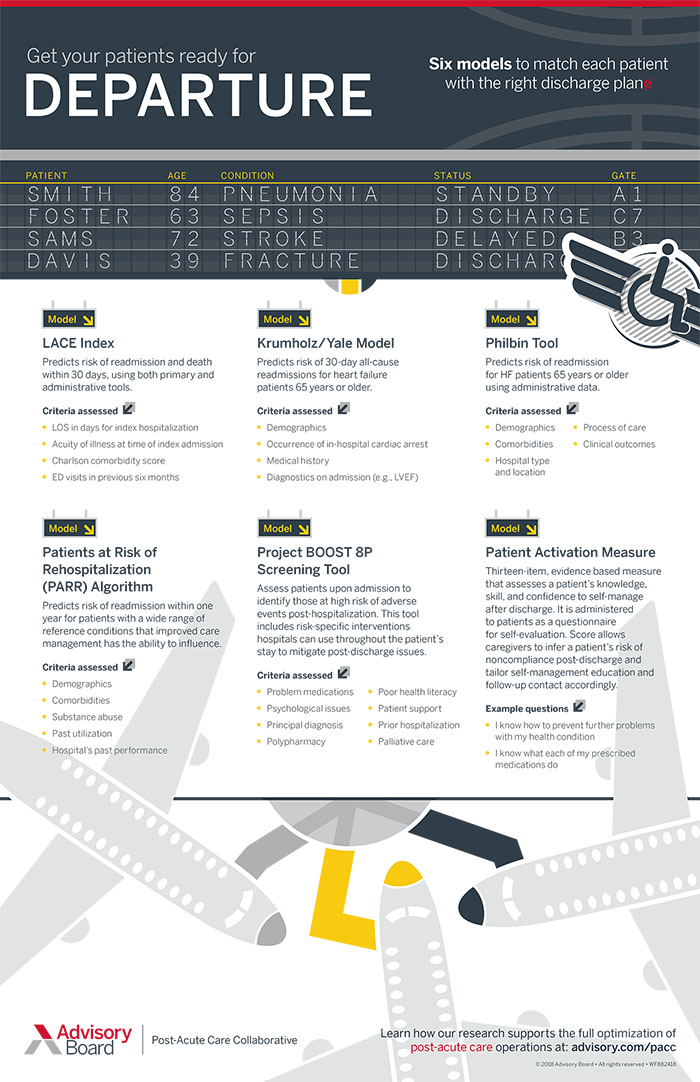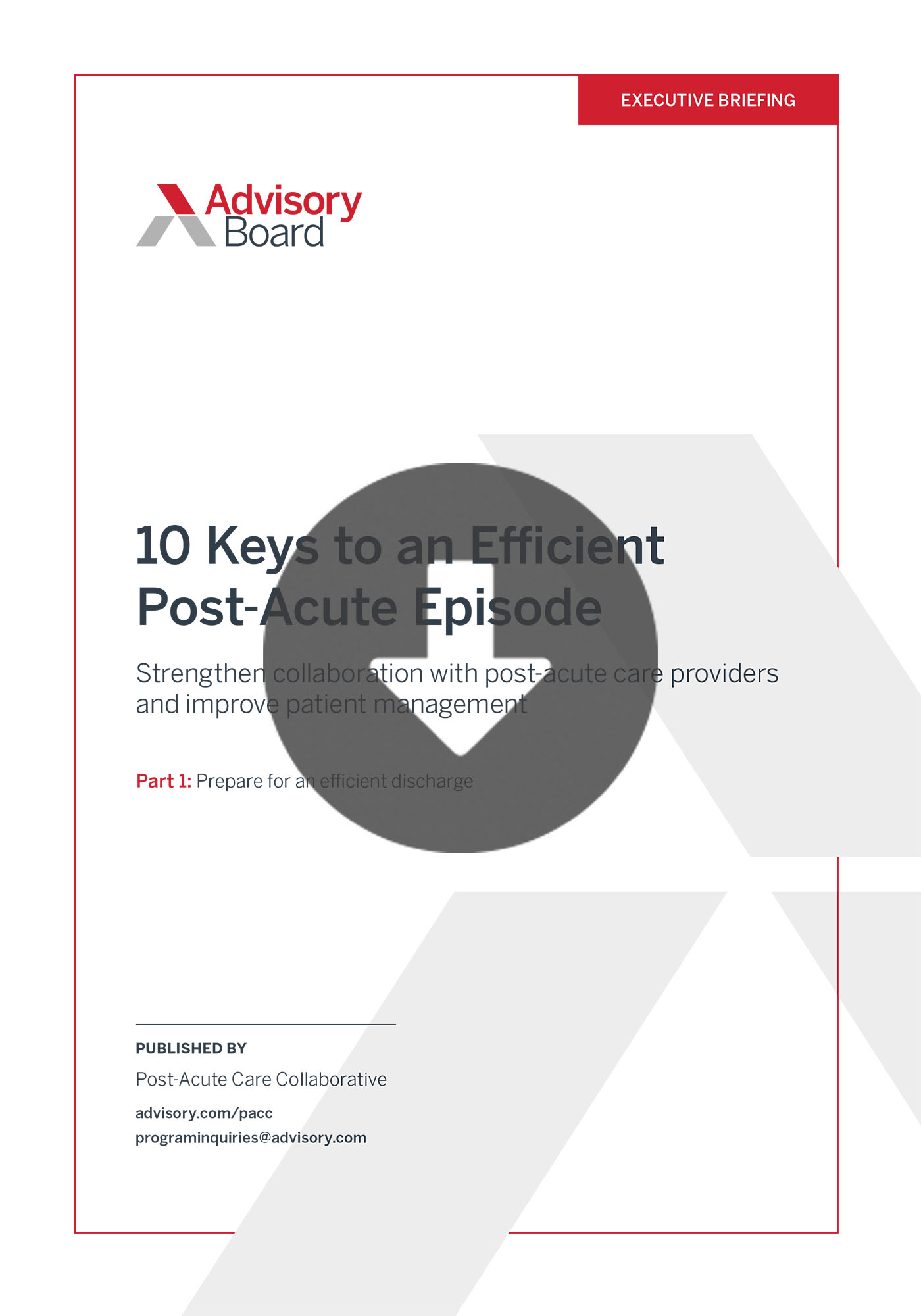Proper patient discharge is critical to reducing costs during post-acute care. Patients placed in settings that are unequipped to care for them may end up returning to the hospital, while patients placed in unnecessarily high-acuity settings can drive up costs. In fact, one study found that between 14% and 42% of post-acute patients, depending on the setting, could be treated in a lower-cost environment.
Below, we outline six tools that can be used to strengthen clinical patient management. To learn more about this and other strategies our research indicates are key to post-acute episodes, download part one of our complete guide on the 10 Keys to an Efficient Post-Acute Episode.
Infographic: We surveyed nearly 4,000 consumers about their care preferences and outlined the top four things post-acute patients and families want from their health care experience
An efficient episode of care, including the post-discharge portion, begins during the hospital stay. Care teams should develop a comprehensive understanding of each patient’s needs early, to optimize the hospital stay and beyond. Failing to do so can result in delayed discharge, improper post‑acute patient placement, or unnecessary readmissions.
Case Study
How one health system optimized their PAC network by launching a post-acute initiative to cover their high-risk, specialty patientsAnd soon, this won’t be optional: CMS has proposed changes to current discharge planning requirements that would mandate a front-loaded discharge planning process.
“ We would clarify the requirement by requiring that a hospital would begin to identify anticipated discharge needs for each applicable patient within 24 hours after admission or registration, and the discharge planning process is completed...without unduly delaying the patient's discharge.“ -CMS's Proposed Discharge Planning Rule
To succeed in this area, hospitals should equip discharge planners with comprehensive risk stratification assessments—including both clinical and psychosocial factors—and conduct assessments soon after admission. We have compiled an Evidence-Based Risk Stratification Tool Compendium that includes various assessment tools designed to strengthen clinical patient management.
Get post-acute care resources like this delivered straight to your inbox. Subscribe now

Early engagement with patients ensures that hospital and care management staff can effectively provide needed interventions and support. Discharge planners also will have the information they need to more efficiently prepare for discharge—without a last-minute scramble. Removing logistical hurdles is crucial to a timely, effective discharge.
Don't miss out on the latest Advisory Board insights
Create your free account to access 1 resource, including the latest research and webinars.
Want access without creating an account?
You have 1 free members-only resource remaining this month.
1 free members-only resources remaining
1 free members-only resources remaining
You've reached your limit of free insights
Become a member to access all of Advisory Board's resources, events, and experts
Never miss out on the latest innovative health care content tailored to you.
Benefits include:
You've reached your limit of free insights
Become a member to access all of Advisory Board's resources, events, and experts
Never miss out on the latest innovative health care content tailored to you.
Benefits include:
This content is available through your Curated Research partnership with Advisory Board. Click on ‘view this resource’ to read the full piece
Email ask@advisory.com to learn more
Click on ‘Become a Member’ to learn about the benefits of a Full-Access partnership with Advisory Board
Never miss out on the latest innovative health care content tailored to you.
Benefits Include:
This is for members only. Learn more.
Click on ‘Become a Member’ to learn about the benefits of a Full-Access partnership with Advisory Board
Never miss out on the latest innovative health care content tailored to you.


